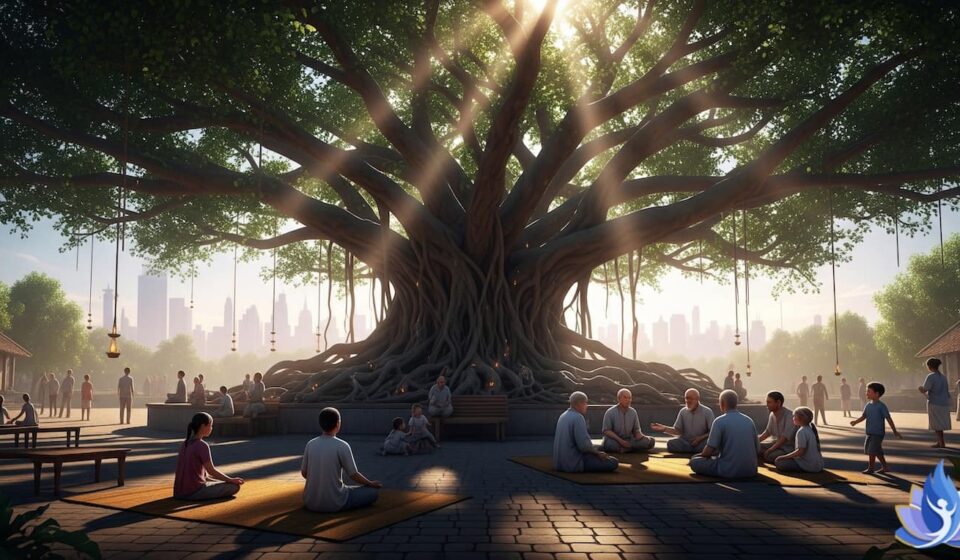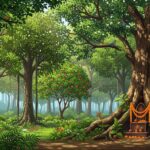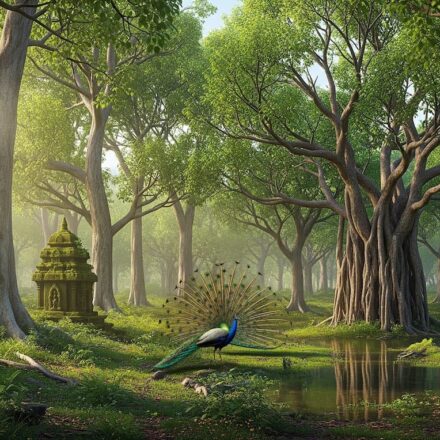
Living Temples: How Ancient India’s Sacred Trees Are Shaping the Future of Our Cities
In our relentless pursuit of progress, we’ve built cities of concrete and steel, often forgetting the quiet, foundational wisdom of the natural world. We search for innovative solutions to urban heat, air pollution, and community isolation, believing we are pioneering new frontiers. But what if the most profound blueprint for a sustainable and harmonious future isn’t new at all? What if it’s a timeless piece of wisdom, rooted deep in the soil of ancient traditions?
Table Of Content
In ancient India, the line between the sacred and the natural was beautifully blurred. Groves and individual trees were not just parts of the landscape; they were revered as living temples—breathing monuments that embodied the divine and underscored the sacred interdependence of all life. Today, as urban planners and environmentalists seek to build healthier cities, they are inadvertently turning to this ancient path, rediscovering that the best way forward is to look back at the wisdom of the living temples.
The Original Sanctuaries: Sacred Groves and Natural Cathedrals
Long before the first stone was laid for any man-made temple, nature provided its own places of worship. In India, these were known as sacred groves (Dev Vana), sections of forest dedicated to deities and ancestral spirits, where all forms of life were protected. These groves were the original biodiversity hotspots, preserved through a powerful blend of spiritual reverence and community practice. To cut a tree in a sacred grove was not just an act of environmental damage; it was a profound sacrilege.
This reverence extended to individual trees, particularly the mighty Peepal (Ficus religiosa) and the sprawling Banyan (Ficus benghalensis). Often found at the center of village life, these trees were more than just flora. The Peepal, under which the Buddha is said to have attained enlightenment, became a symbol of wisdom and peace. The Banyan, with its incredible aerial prop roots that form new trunks, represented eternal life and community expansion.
These were nature’s cathedrals. Their dense canopies provided cooling shade from the harsh sun, creating natural gathering places for rituals, town meetings, and simple daily conversation. Their complex root systems held the soil together, preventing erosion, while their leaves purified the air and their branches offered sanctuary to countless birds, insects, and animals. The worship of these trees was, in essence, a practical recognition of their life-sustaining role. They were living, breathing examples of a perfectly balanced ecosystem.
From Ancient Roots to Urban Canopies: A Modern Revival
The wisdom of treating trees as sacred infrastructure is experiencing a powerful modern revival. As cities grapple with the “urban heat island” effect—where concrete and asphalt absorb and radiate heat, making urban areas significantly hotter than their rural surroundings—planners are turning to the simple, elegant solution of urban canopies.
The practice of planting and protecting trees in cities is now framed in the language of science and public policy: “green infrastructure,” “biophilic design,” and “nature-based solutions.” Yet, the core principles are identical to those of the ancient sacred groves.
- Air Purification: A mature leafy tree produces as much oxygen in a season as 10 people inhale in a year. Modern metropolises are now planting trees specifically to combat air pollution from traffic and industry, just as ancient villages were built around trees that naturally cleansed the air.
- Community Hubs: Today’s urban parks and tree-lined public squares serve the exact same social function as the Banyan tree in the village center. They are places where community is forged, where people connect, and where mental and physical well-being is enhanced. Studies have repeatedly shown that access to green spaces reduces stress and improves public health.
- Biodiversity Sanctuaries: Conservation efforts in modern cities focus on creating “wildlife corridors” and planting native species to support local fauna. This is a direct echo of the sacred groves, which were protected sanctuaries for all forms of life, ensuring that the web of interdependence remained intact.
Cities from Singapore, with its iconic “Gardens by the Bay,” to Paris, which aims to have 50% of its area covered by planted surfaces by 2030, are adopting this green-temple philosophy. They are recognizing that investing in trees is not a luxury, but a vital necessity for resilience, health, and a tangible connection to the natural world.
Reflection: Planting a Legacy for the Future
The act of planting and protecting a tree is an act of profound optimism. It is a gift to future generations—a legacy of shade, clean air, and natural beauty. This understanding is not new. It is an ancient path to environmental harmony that has been walked for millennia.
The reverence for sacred trees in ancient India was not based on superstition, but on a deep, intuitive understanding of ecological principles. It was a recognition that human well-being is inextricably linked to the health of the planet.
As we stand at a critical environmental crossroads, this ancient wisdom offers us more than just inspiration; it offers a proven, time-tested model for sustainable living. By embracing our trees as the living temples they are, we can build cities that are not only smarter and more resilient but also more soulful and deeply connected to the sacred rhythm of life.










